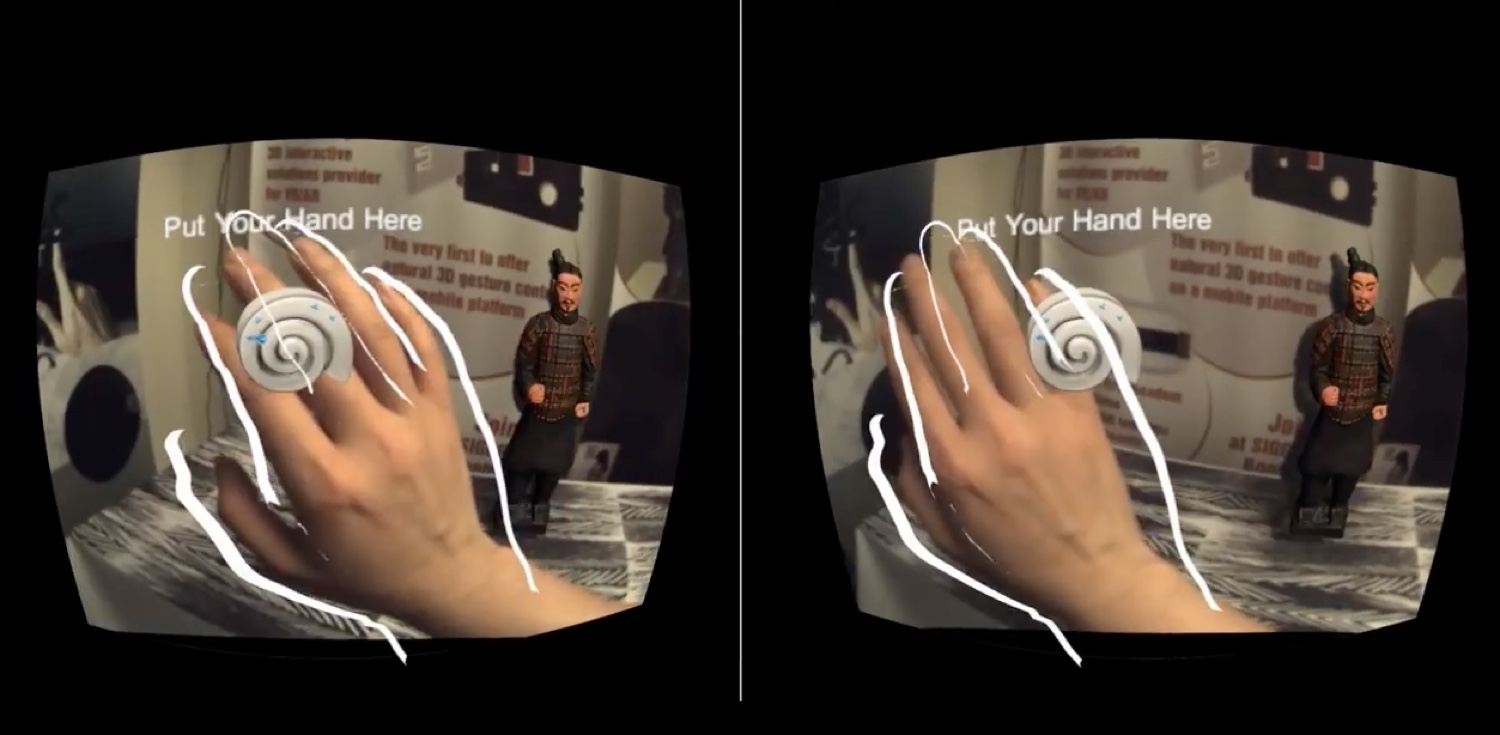This Gadget Brings Scary-Real Finger Tracking to AR
uSens' new sensors are bringing hand-tracking technology to mobile VR and AR experiences.
When it comes to virtual reality in 2016, it's all about the hands. uSens, the company behind the ImpressionPi headset, is rolling out the next phase in its VR strategy, the Fingo hand-tracking developer kit.
According to TechCrunch, the Fingo line was created with mobile VR in mind and will allow headsets to track the wearer's hands within a space using inside-out positional tracking. In the above demo, you see someone reaching, grabbing and throwing objects in a virtual environment viewed by way of a ordinary-looking Samsung Galaxy phone.
However if you look to the left, you'll notice that the phone is plugged into a device hidden along the smartphone rear, which is most likely the Fingoo sensor which measures 4 x 1.5 x 0.5 inches and weighs 1.5 ounces.
Fingo will come in several flavors, but for now, all of them will be developer-only. The higher-end modules dubbed the Color and Power Fingo, respectively, will both feature the inside-out tracking. The former system will make use of color cameras for augmented reality overlays. It comes as no surprise that uSens is interested in implementing VR in some fashion since the ImpressionPi is capable of delivering VR and AR experiences.
Similar to Intel's Project Alloy, Color Fingo will offer six-degrees of freedom, which essentially mimics the feeling of moving up, down, side-to-side, forwards and backwards.
MORE: Best VR Headsets

The Power Fingo is that weird-looking case shown during the latter part of the video. It's currently compatible with a Snapdragon 805 or a Samsung Exynos 7420 processor, which allows your smartphone's CPU to focus on rendering graphics at a steady 60Hz.
Sign up to get the BEST of Tom's Guide direct to your inbox.
Get instant access to breaking news, the hottest reviews, great deals and helpful tips.
Meanwhile, the Fingo will take care of all the positional tracking. That should make for a smoother VR experience in addition to allowing wearers to interact with their environment in a more natural way. uSens is also rolling out its uDev network to help developers add the tech into its hardware or software.
Although there's a definite interest into bringing our hands into the virtual forum, the technology is definitely in its infancy. Companies are still trying to make the pitch for virtual reality to mainstream audiences, so it might be quite a while before we see the Samsung Gear VR support any sort of hand or motion tracking.
However, Intel and Google can play by their own rules when developing for VR, so fingers crossed for either company rolling out something with enough wow factor to pique mainstream imaginations.
Sherri L. Smith has been cranking out product reviews for Laptopmag.com since 2011. In that time, she's reviewed more than her share of laptops, tablets, smartphones and everything in between. The resident gamer and audio junkie, Sherri was previously a managing editor for Black Web 2.0 and contributed to BET.Com and Popgadget.

